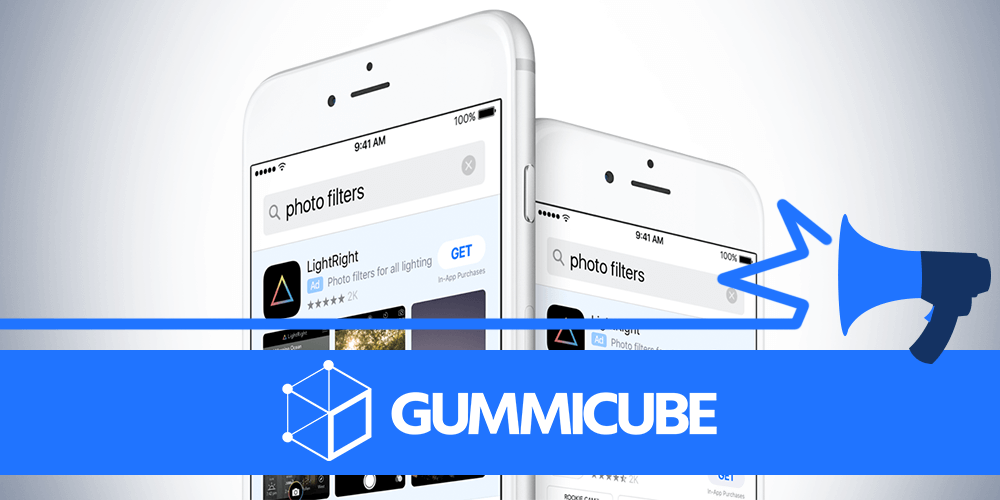
Posted on August 30th, 2018
Once a user discovers your app, a new challenge begins: how do you convert them a potential user to an install? Proper App Store Optimization doesn’t just help more users find your app, it helps convert them into loyal customers with several useful app page conversion tactics.

Posted on August 25th, 2018
App developers are always on the prowl for new ways to drive installs and improve their conversion rate. They’ve taken to combining their ASO strategy with paid marketing campaigns such as Facebook Ads to attract and convert the right users. As with any ASO or paid acquisition strategy, the creative presentation and technical guidelines of Facebook Ads campaigns need to be considered. Performance should be also regularly be re-evaluated to make the best results are being achieved. Facebook has a vast userbase that is comprised of a wide range of age, gender, location, and various other demographics that encompass their over 2 billion active users. When creating Facebook Ads, keep the varying interests of their users in mind when determining what images engage best. That means all visuals for Facebook Ads have to optimized to their intended audience as they account for 75-90% of an ad’s performance. It’s crucial that advertisers follow best practices when optimizing their creative assets to ensure that their install and conversion metrics are increasing month-after-month.

Posted on August 23rd, 2018
Facebook continues to be a platform ripe for marketing. There are many techniques for using Facebook as a marketing platform, including creating Facebook pages and utilizing influencer marketing. Mobile app ads are another key tool for app developers and marketers, but there are some important things to keep in mind while designing a Facebook mobile installs campaign.

Posted on August 18th, 2018
There’s no denying just how large of a reach Facebook has. At the end of the second quarter of 2018, the social network reportedly saw 2.23 billion monthly active users, only furthering its popularity. While 32.8% of its users view their feeds on laptops and desktops, nearly 95.1% of Facebook users are accessing the social site via their mobile devices. Facebook undoubtedly has a mobile-minded userbase, and advertisers have taken notice. Since users often take to Facebook to find the next viral thing, why wouldn’t it be a viable avenue for helping app developers increase their number of installs? With the shift to thinking mobile-first that has come about in recent years, advertisers and developers alike need to take into consideration that running paid campaigns on not only the App Store (Search Ads) and Google Play Store (Google Ads), will help increase their installs. But like all paid search platforms, it’s unwise to go in without a solid understanding. It’s important that developers gain knowledge on what Facebook Ads are before fully diving into ad creation.

Posted on August 9th, 2018
When launching a Search Ads campaign, one might wonder what the best keywords they want to target are, what variants they use and how to get the best matches. Search Ads is a key tool for App Store Optimization on the Apple App Store, so making the most out of it can help an app target and capitalize on valuable keywords and search terms. Among the Search Ads options are two valuable methods to use within campaigns: Search Match and Broad Match. What are they, and how can they help your Search Ads campaign? What They Are Search Match and Broad Match are ways of discovering new keywords for Search Ads based off your keywords and metadata. The means of discovery are different between each one. With Search Match, the Search Ads algorithm scans your metadata and the category your app is in within the App Store. It then determines what keywords your app is relevant for and pulls those for your Search Ads campaign. This is also useful for discovering keywords; think of it as Research & Development for your targeted keywords. Broad Match uses the core keywords you want to target, such as brand name, the specific type and category of the app, and so on, and pulls variations of those keywords. This includes common misspellings, plural or singular versions, minor variants and so forth. It then categorizes those keywords based on user search terms and puts relevant ones together to include in your campaign. This also helps developers identify keywords related to their brand or core features they might have otherwise overlooked.

Posted on August 4th, 2018
It’s no secret that 65% of downloads come from search, and Apple Search Ads has been helping developers acquire millions of users since it launched in 2016. Search ads can allow developers and marketers to drive impressions to users intending to download an app with the features, functionality, or competitor relevancy of their app. This is makes it one of the most effective ways to drive installs from more engaged and active users. Starting a campaign is relatively simple. Developers won’t have to worry about creating additional ad copy and creatives, since Apple pulls this from the app’s existing store listing metadata. While the creation of an ad is one less worry, developers will have to consider what goes into Search Ads and learn how and where to start in order to run a successful campaign.

Posted on August 2nd, 2018
Apple Search Ads has proven to be a successful way to reach new potential users on the Apple App Store. It boasts a conversion rate of around 50 percent and a cost per acquisition of under $1.50, making it an efficient and cost-effective advertising tool. Apple continues to roll out new updates and expansions, including new territories and creative sets, so Search Ads will continue to expand. Search Ads is part of a strong App Store Optimization strategy. By targeting relevant keywords, it can help ensure reaching a wide and interested audience. Like with keywords, Search Ads can even be used to target specific brands. Is it a good idea to target a competitor’s brand when you’re bidding on Search Ads? There are benefits and downsides to such a strategy, as well as missteps you’ll want to avoid.

Posted on August 1st, 2018
Apple and Google want to get apps onto user’s devices faster. They allow developers to get their apps onto devices faster by releasing Pre-Order Apps (iOS) and letting users pre-register on Google Play. Pre-ordering apps seems beneficial to users, as it delivers what they want earlier. But how can it benefit developers? Are there any positives during the pre-launch phase? What does pre-ordering mean for their ASO strategy? Let’s go over why allowing apps to be pre-ordered/pre-registered would be beneficial to developers.

Posted on July 28th, 2018
Podcasts have become increasingly popular among listeners of all ages since Apple added podcasts to iTunes 4.9 in 2005. In fact, in 2018, 44% of Americans ages 12+ have listened to a podcast at some point, and roughly 26% have listened to one in the past month. Podcasts can reach a large audience of listeners and can be created by just about anyone. However, if you’re thinking about creating a podcast, there are some best practices to keep in mind to help get you started: 1. Know Where to Post Your Podcast While there are several streaming services that have loads of podcasts readily available, it’s important to note which service would help you gain the most subscribers. Currently, iTunes has cornered the market for podcast consumption with over 63.2% combined market share, split among the podcast app, iTunes desktop and third-parties. Despite the number of Android devices and users increasing year-over-year, there’s no denying that Apple has the podcast market covered. It’s important that podcasters still take the step in evaluating which streaming service will be best to host their podcast, but ultimately, iTunes is where they’ll get the most exposure.

Posted on July 14th, 2018
Summer Loss of Knowledge and Downloads We’re well into summer, and children are enjoying having several months free from school. “Summer learning loss” begins as kids grow complacent over the summer and forget 25-30 percent of what they learned during the school year. Parents want to make sure that their kids don’t forget their studies, and developers of educational apps want to help. However, as Google Trends shows, searches for “Education” and similar terms tend to steadily decline during the summer before returning for the new school year.

Posted on July 4th, 2018
There’s more to launching an app than just finishing the build and deploying it on the app store. The key to success lies in preparation – what should you know and do pre-launch, before your app goes live? For starters, App Store Optimization is essential, but you should start optimizing and marketing your app before it hits the store. Before you launch your app, here are the steps you should take to ensure a successful launch.

Posted on June 27th, 2018
Say what you will about millennials, but no one can deny that they are making waves in the offices of digital marketers around the globe, forever shifting the landscape of online advertising. As they continue to be the largest generational group on social media, companies are finding new and innovative ways to advertise to them. In light of this, influencer marketing has become increasingly more popular year after year, dating back to the mere conception of social media. In fact, 71% of consumers are more likely to make a purchase based on a social media promotion, and apps are no exception to this strategy. Looking at App Store Optimization (ASO), paid search, and email marketing, is it worth allocating those extra marketing dollars into yet another user acquisition channel for your app? Research has shown that influencer marketing is rated as one of the fastest growing online customer-acquisition channels. This success rate isn’t unwarranted - there’s a reason why the popularity of this strategy only continues to grow. So why is social influencer marketing so effective and how can it impact your app’s visibility? User Trust While social media ads can be wildly effective and drive in visibility and downloads, influencer marketing is perceived as a more organic approach. Users tend to trust promotions by social influencers more than paid advertisements, because:













